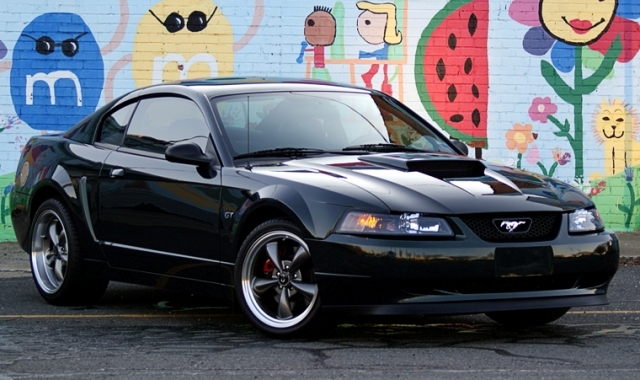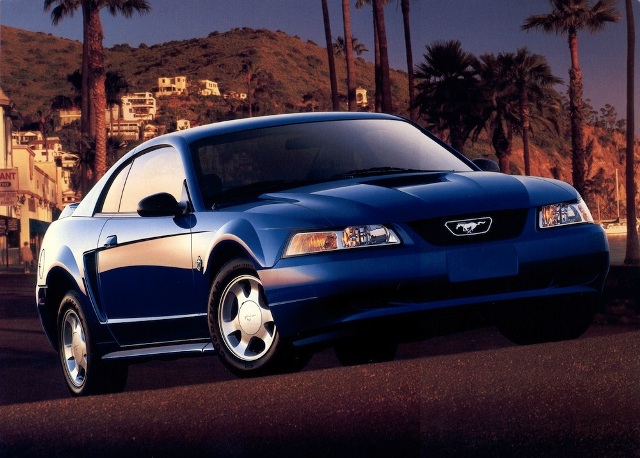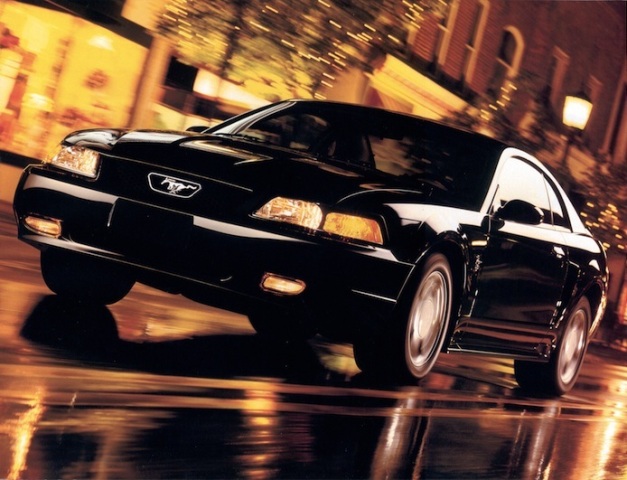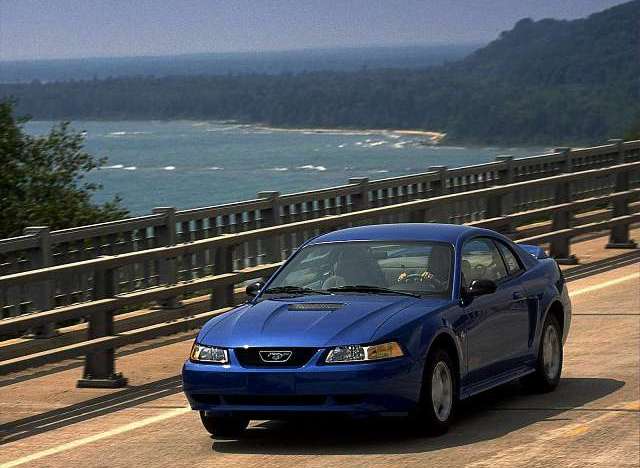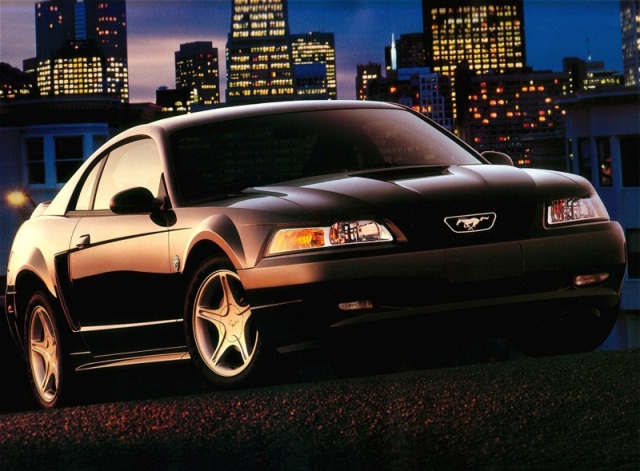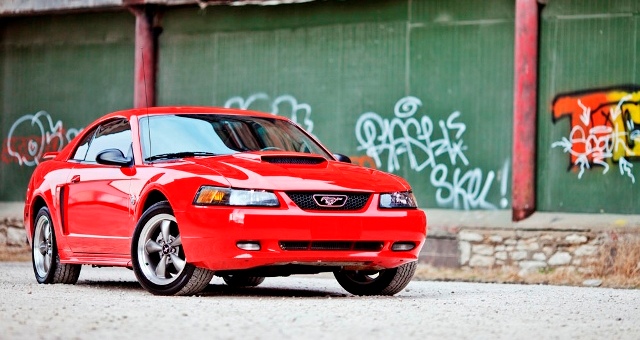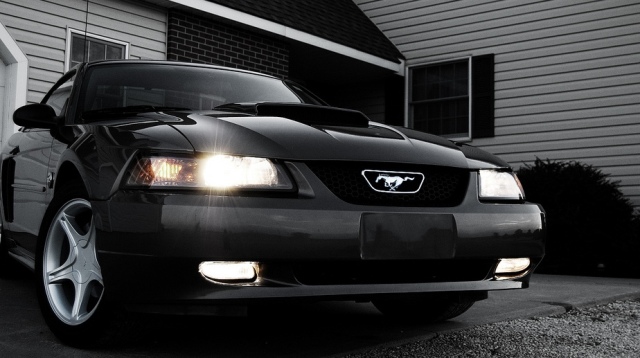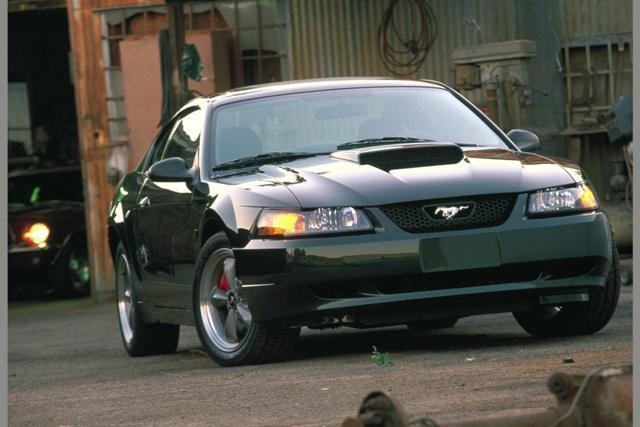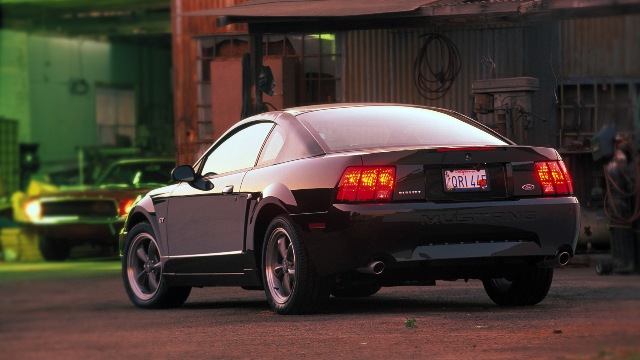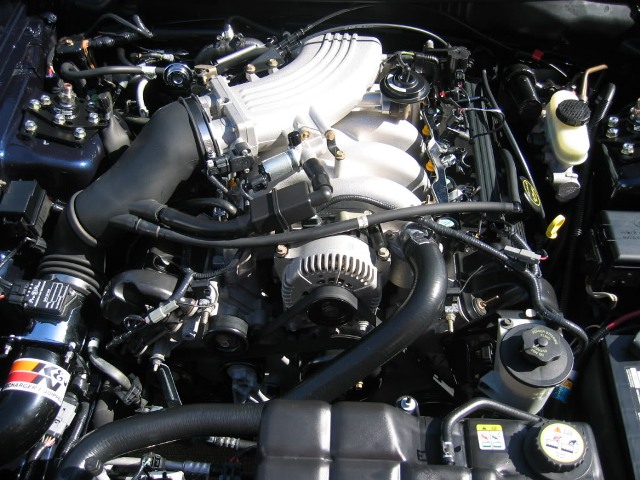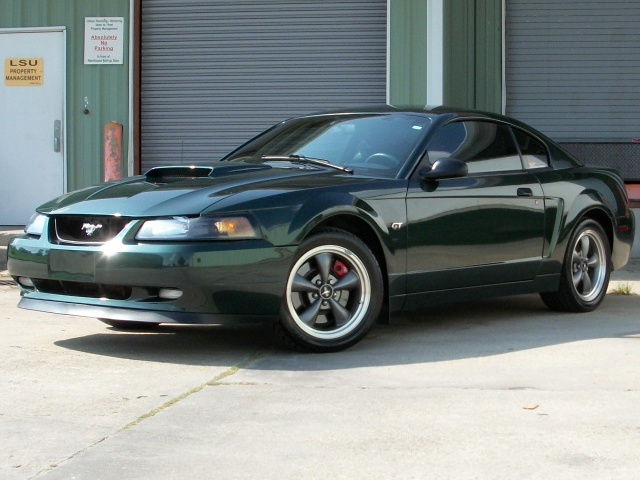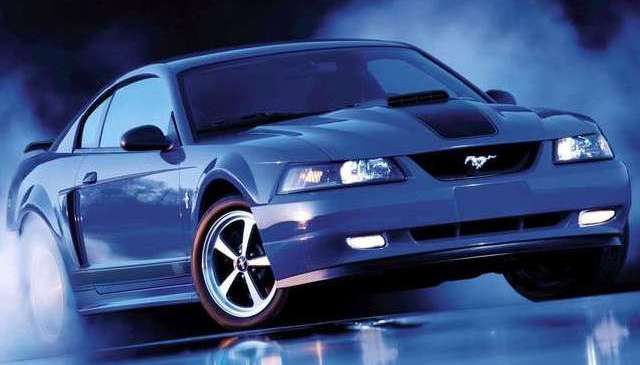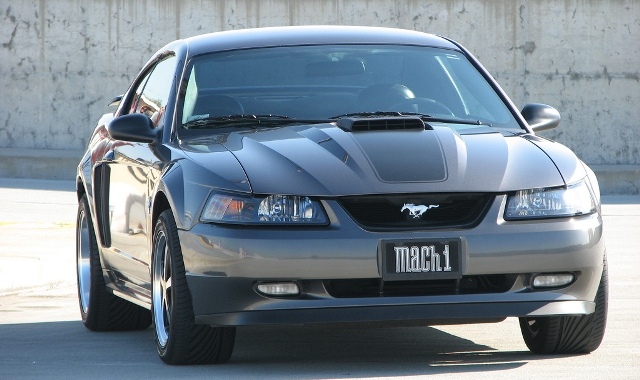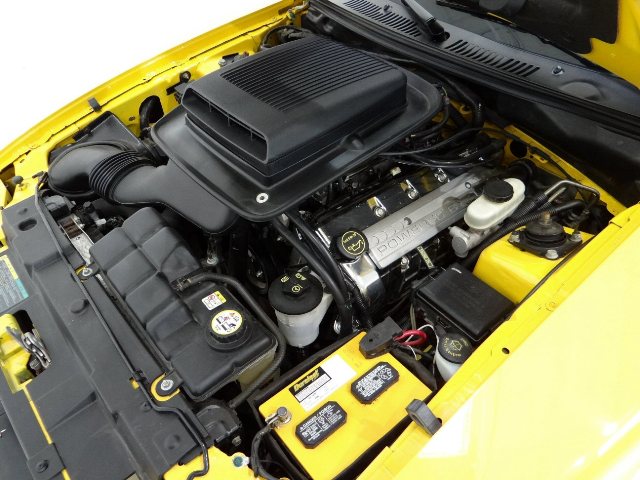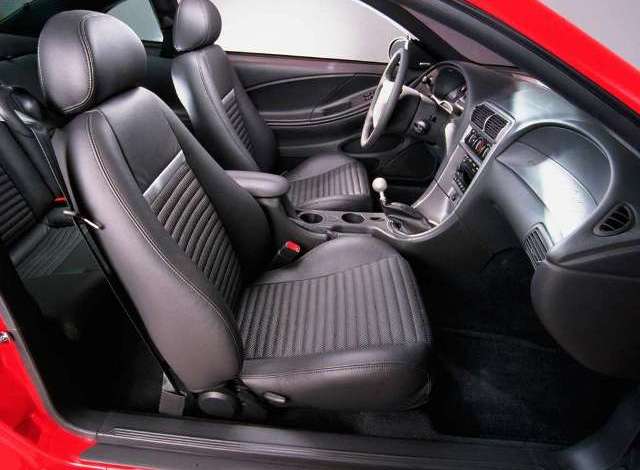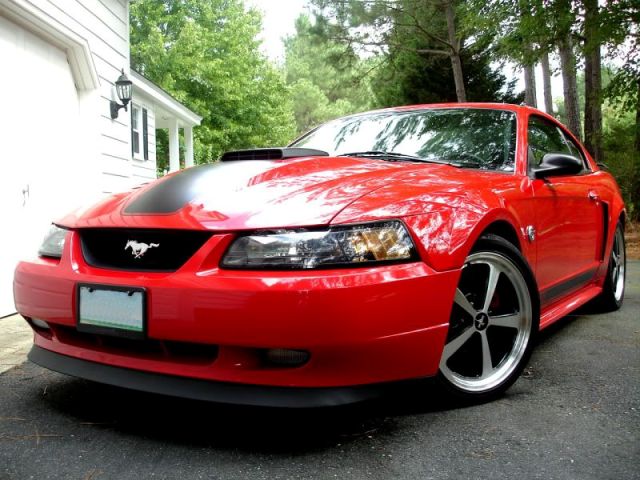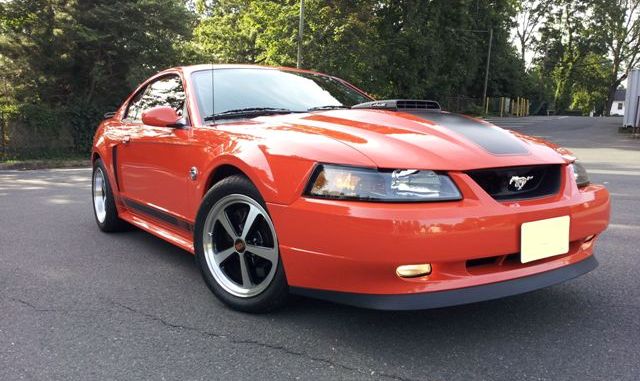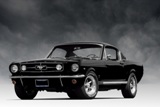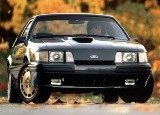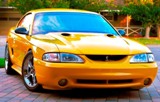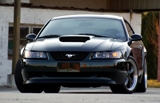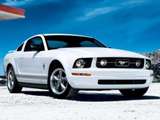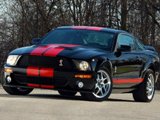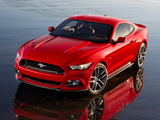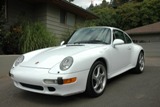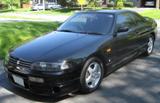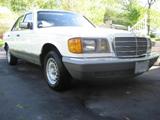Enthusiast's Corner
1999-2004 Ford Mustang: The New Edge Style
Written by James Dolan
Nineteen ninety-nine was a busy year for the Mustang as it marked yet another milestone with the car celebrating it’s 35th anniversary of continuous production and a major restyle to go a long with it. When the 1994 Mustang was introduced some Mustang enthusiasts felt that the car looked a little to soft, rounded and not aggressive enough. Some even went as far to say that the car looked a little too “Japanese”. There was also universal criticism regarding the Mustang’s power output, or lack thereof, from its V-8 engine. This sentiment grew when the new 4.6-litre modular V-8 was introduced in 1996 with no power increase. Ford listened to both their customers and critics and went to work on improving the SN95 Mustang in a big way for the upcoming new millennium with some new body panels for the exterior and numerous improvements underneath.
After many years of smooth, flowing aerodynamic styling that Ford had pioneered in the 1980’s, the trend had started to wear a little thin since just about every other manufacturer had imitated this styling theme. As a result the Vice President of Design, Jack Telnack, who was the father of “jellybean” styling of Ford vehicles changed directions and created the “New Edge” style before his retirement in 1997. New Edge styling theme used crisp lines and geometric elements to create vehicles like the 1999 Mercury Cougar and 2000 Ford Focus. This aggressive new styling theme would also be used to restyle the Mustang for 1999. This was not an easy task since designers had to incorporate “New Edge” elements into the opposing jellybean shape of the SN95 body.
From the window line down the 1999 Mustang was given a new look that was more aggressive yet still retro and fun at the same time. The front bumper was given a crisper, edgier look with an incorporated trapezoidal grille opening along with a chrome surrounded running horse set dead centre in a honey comb grille. A harder edge look was given to the wraparound headlights that were made larger. The hood was redesigned with a non functional hood scoop and crisper bodylines.
Aggressively flared wheel arches at the front and rear gave the new Mustang a more purposeful stance. The bodyside was redesigned with a more pronounced C-shaped body sculpting with a flat cove and sharper upper and lower bodylines extending all the way to the very front of the vehicle. Once again non-functional air scoops were installed just aft of the front doors but were now much larger. The rocker panel extensions were made less pronounced and now had an angular look.
The rear end of the car was squared off and the quarter panels were made to look more substantial and slab-sided. New angular three-bar trapezoidal tail lamps replaced the rounded assemblies from the previous car. A new rear bumper complemented the rest of the vehicle with its chiseled lines, bulky appearance and more prominent “MUSTANG” lettering embossed into it. Even the deck lid was all new and made of a molded plastic compound with a larger third brake light that wrapped up to the top of the trunk lid. The optional rear spoiler was redesigned with a geometrical look echoing the edgy theme.
One area of the Mustang that did remain in tact for the most part was the roof line and glass areas that swept up from the New Edge styled lower half of the car in an arch back down. To keep development costs down engineers choose not to redesign the roof section of the vehicle since this area is a structural component and would be too expensive to revise. The only change made was to the plastic decorative C-pillar sail panel that had its “kink” removed at the rear of the quarter glass.
Overall designers did an admirable job of breathing new life into the Mustang and modernizing it for the new millennium. The chiseled lines and sharp creases of the New Edge Mustang gave the car a character all of its own yet still retained many of the retro styling cues that buyers loved. While most people loved the new look one critic observed that the New Edge Mustang with its hard edged lower styling and flowing roofline looked like a shoebox that was wearing a baseball cap. Although the mixture of styling themes may seem a bit of a curiosity I find that the rounded tone of the roofline softens up the overall design just enough to prevent the car from looking overly edgy.
Changes to the 1999 Mustang were more than just skin deep. Under the hood Ford power-train engineers massaged both the V-6 and V-8 engines to produce more power. The 3.8-litre pushrod V-6’s horsepower increased by 40 to 190-hosepower and torque was up by 5 to 215 pound-feet. This was accomplished with a new freer breathing split-port induction system that incorporated two runners for each cylinder, new cylinder heads, new aluminum main and thrust bearings and friction reducing piston coatings. For smoother running performance a counter-rotating balance shaft was installed to dampen out unwanted vibrations and made the 3.8 feel less like an agricultural tractor motor and more refined.
Ford was also working hard on making the 3.8 V-6 more environmentally friendly by lowering its emissions and qualifying it as an LEV (Low Emissions Vehicle). While the 3.8 V-6 wasn’t a hot rod it did have respectable performance. As a matter of fact the base V-6 Mustang for 1999 had more horsepower than the celebrated 1982 5.0-litre Mustang GT. For the first time in its history the base Mustang engine had more than enough power for the car to feel sporty and launch itself from rest with authority.
While the revised 3.8 was a big improvement in the base Mustang, performance junkies were thrilled to find an extra 35-horsepower under the hood of the GT. The 4.6-liter single-overhead cam V-8 received a bevy of improvements including new Performance Improvement cylinder heads with reshaped combustion chambers and provisions for larger valves. Those new heads also housed hotter camshafts with a higher-lift and longer-duration that allowed the valves to fill the combustion chamber with more fuel and air. The intake manifold was revised with straighter runners for better airflow in order to take advantage of the new heads and cams.
Engineers also made improvements to the bottom end of the engine with an improved crankshaft, connecting rods and thrust bearings. Just like its V-6 brother the 4.6-litre V-8 had lower emissions and qualified as a TLEV (Transitional Low Emissions Vehicle). All these changes added up to a competitive 260-horsepower and 302 pound-feet of torque. To further improve performance Ford now offered the 3.27:1 “performance” axle ratio as standard equipment with both engines giving all Mustangs an improved amount of snap off the line. Now Mustang fans needn’t hang their heads in shame as the new Mustang finally had enough power to be considered at least competitive next to their cross-town G.M. rivals.
Underneath the origami exterior Ford engineers made revisions to the Fox-4 chassis to improve ride and vehicle handling dynamics. The transmission tunnel was modified and raised by 1.5-inches to allow more rear wheel travel. In order to stiffen the chassis engineers fully boxed the side rails and used insulating foam in the rocker-panel area. Floor pan sealing was also upgraded in order to reduce road noise and convertibles were additionally reinforced with rail extenders to reduce body shake. Shocks and struts were retuned and smaller anti-roll bars installed along with firmer springs. Rear track on all models was widened by 1.4-inches and now matched the front dimensions.
Up front new twin piston brake calipers were installed reducing unsprung weight by 10-pounds per side. A larger brake master cylinder was installed along with improved brake pads that provided better stopping ability with better braking feel. Engineers managed to shorten the Mustang’s turning circle by three feet with a revised steering system that used less boost and provided better on-centre feel. These changes not only made the 1999 Mustang a much more pleasant car to live with during day to day driving out but also improved the ride and handling performance as well.
Another large improvement for the 1999 Mustang was the availability of an all speed traction control system. This system worked in conjunction with the vehicle’s anti-lock braking system. When the ABS wheel sensors detected wheel slippage the system would automatically retard the spark and reduce throttle application. At higher speeds up to 100-kph the system could also brake either rear wheel as needed until traction was regained. The system would allow for some amount of wheel slippage for aggressive smokey starts but as soon as the system detected any sideways motion it would kick in and rein things in. For those who wanted to have the freedom to do grand smoking burnouts and kick the Mustang’s tail out the system had a switch located on the lower dash near the shift lever that could turn the system off..
1999 Mustang 35th Anniversary Limited Edition
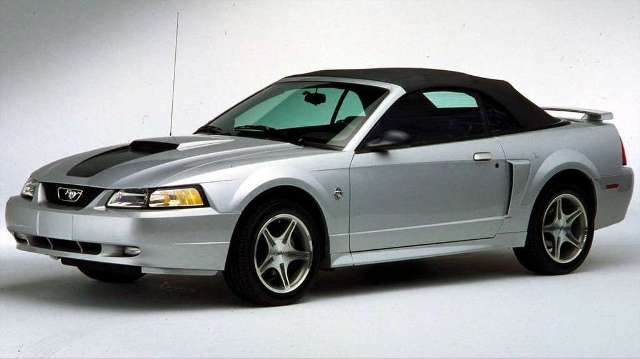
1999 Mustang GT 35th Anniversary Edition
After pretty much ignoring the Mustang’s 25th and 30th anniversaries Ford decided that it should celebrate the Mustang’s 35th year with a special model. While all models received special 35th Anniversary fender badges Ford decided to take things a step further by offering a 35th Anniversary Limited Edition Package offered only on GT coupes and convertibles. The 35th Anniversary Limited Edition Package didn’t offer any special suspension or performance improvements as it was strictly an appearance package; however Mustang fans didn’t mind as they were happy that they could purchase a special model to celebrate the car’s birthday.
Inside, the special edition car was offered with Midnight Black leather interior with silver inserts in the seats and door panels. Manual transmission models came with a retro looking aluminum shift knob while buyers of the automatic had to make due with the standard shift lever. The silver theme continued onto the instrument cluster with the black gauges being framed with a sliver bezel.
Outside, this special pony had a host of changes. A raised forward facing hood scoop was added along with a black hood stripe down the centre of the hood. The 17x8 five-spoke aluminum wheels were machined with a bright finish and recesses were painted a dark grey. Larger side scoops were added and the rocker panel moldings were revised and had their own special look. At the rear a special unique spoiler was installed and a black honeycomb insert was added in-between the taillights. In all 4,628 35th Anniversary Limited Edition Package GT coupes and convertible Mustangs left the factory finished in Black, Silver, Chrystal White or Performance Red.
2000-2004 Mustang
With the major changes in 1999 Ford changed very little for the 2000 model year. The only notable changes consisted of child seat tether anchors behind the rear seat and an interior glow-in-the-dark release for the trunk lid for those who are misfortunate enough to get trapped in the cargo area a way to escape.
After minimal changes for the previous model year, 2001 brought about a flurry of styling and packaging changes along with the Bullitt; the first of a line of special edition Mustangs to be introduced over the next couple of model years. All 2001 Mustangs received a new centre console with revised (and much improved) cup holders and a power outlet and tissue holder in the storage area under the centre arm rest. Switches for the rear defogger, fog lights and traction control were now located just below the radio on all cars.
On convertible models the switch to operate the power top was moved from behind the cup holders to the area between the gear selector and cup holder. On coupes the switch for the power top was replaced with a mini coin holder that served more as a dirt and crumb collector than proper coin storage. The audio system was also redesigned with a more ergonomic double decker 2 DIN audio head unit replacing single DIN units that had small, finicky to operate buttons. Also new was the availability of an audio head unit with a built in 6 disc CD changer for the MACH 460 audio system option.
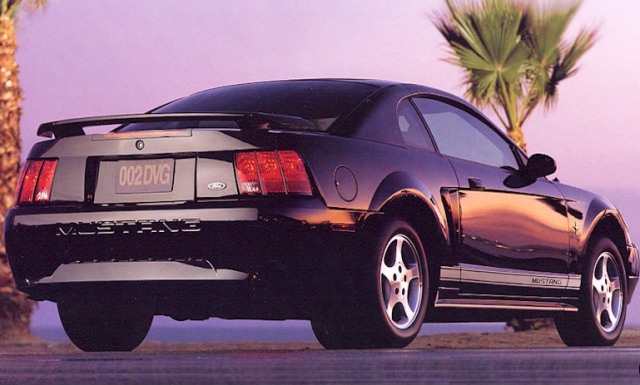
2002 Mustang V6 with Sport Package
Outside, all Mustangs received new headlight assemblies that had dark smoked reflective lenses replacing the all chrome units. Mustang GT’s gained the hood, side scoops and pedestal rear spoiler from the 1999 35th anniversary edition giving the car a much more aggressive appearance. Also new was the addition of a new 17-inch alloy wheel with styling that mimicked the beloved five spoke Torq-Thrust wheels from the 1960’s. These new wheels quickly became a “must have” item for many owners of New Edge Mustang’s and proved to be a popular option.
For 2001 Ford introduced a new sub-model structure for V-6 and GT Mustang’s. Buyers could now choose a V-6 Mustang coupe in Standard, Deluxe or Premium packages while V-6 convertibles and all GT body styles were available in Deluxe or Premium trim. In addition to these new trim packages V-6 buyers could also order a Sport Appearance Group that included 16-inch five-spoke alloy wheels, leather wrapped steering wheel and a rear spoiler.
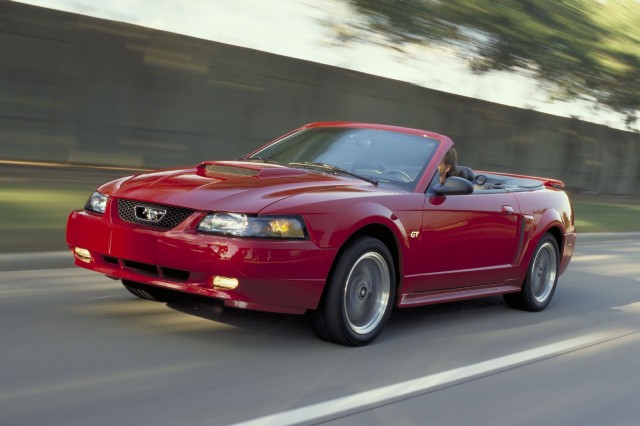
2003 Ford Mustang GT Convertible
In order to draw interest towards the vehicles in the Mustang stable in 2002, Ford conjured up yet another special package for the V-6 appropriately named the Pony Package. This package included unique 16-inch polished aluminum wheels, Mustang stampede decals on the lower doors, black “MUSTANG” lettering on the rear bumper, the hood and scoop from the GT and a leather-wrapped steering wheel. The Pony Package and Sport Appearance Group were mutually exclusive and could not be ordered together.
From 2001 on, the core Mustang packages and trim pretty much remained the same with only very few minor tweaks from year to year.
Even with these changes, Ford knew that they would have their work cut out for them to keep drawing interest towards the aging Mustang until the launch of all new Mustang scheduled for the 2005 model year. Ford’s marketing department tore out a page from the Mustang’s playbook from the early 1990’s and decided to roll out some special edition Mustang’s from 2001 to 2004 in an attempt to stoke the Mustang’s sales. Some of these special edition vehicles were typical paint and trim editions while others were well rounded true special edition vehicles.
2001 Mustang Bullitt
For years Ford had been producing special editions Mustangs, many of them were merely just regular production cars with some special paint and trim but not much substance. That all changed when the2001 Mustang Bullitt GT hit the streets. This special edition Mustang paid homage to the 1968 Mustang in the movie Bullitt; which has a huge cult following among car enthusiasts. Ford could have easily just tartted up some standard Mustang GT’s with some special paint an added some retro trim but the marketing department wanted a car that would be a proper, modern interpretation of the iconic 1968 Mustang GT 390 in the film. This new car had to have both the look and feel of the car from the 60’s. To do this Ford set out to improve just about every area of the Mustang GT.
Just like the 1968 Mustang from the movie, the 2001 Mustang Bullitt GT’s exterior had a muted yet aggressive look. To the casual observer the 2001 Bullitt was a spoiler-less Mustang GT with a cool set of wheels; however upon closer inspection one will notice many subtle detail changes that give the Bullitt GT a look all its own.
Up front, the fog lamps that were standard equipment on the GT were eliminated to tone down the look of the front bumper. A hood scoop borrowed from the 35th anniversary Mustang was grafted onto the hood giving the car a more aggressive appearance. Along the sides of the car the flared rocker panel moldings from the GT were replaced with a smooth, less aggressive molding with a sleek look. New C-pillar moldings with a kinked quarter window opening were also specified. For an added retro feel a cool set of 17-inch five-spoke alloy wheels that replicated the look of a 1960’s Torq-Thrust wheel were installed. The only piece of bright work on the car was a brushed aluminum fuel filler door bolted to the passenger side fender. Finishing off the look was a stylized “BULLITT” badge on the rear trunk lid. Customers were given the choice of three colours; True Blue, Black, or a special and very appropriate Highland Green that was only available on the Bullitt.
Inside, the charcoal interior was treated to a number of muted enhancements. All Bullitts were equipped with a fine set of aggressively bolstered leather clad sport seats with a pleated leather centre section. The type face of the instrument cluster was revised with a retro font. Other nice touches in the interior included aluminum accents on the doorsills, foot pedals, shifter bezel and an aluminum gear lever ball that gave the Bullitt a cool 60’s vibe. All these pieces combined to give the interior of the 2001 Bullitt a muted yet distinct look unlike any other Mustang.
Visually, the 2001 Bullitt might have been a successful modern rendition of an iconic car from 1968 but Ford wasn’t satisfied with just doing a cosmetic edition of the car, they also wanted it to perform! Ford managed to coax more power out of the 4.6-litre modular V-8 by installing a freer breathing intake manifold and low restriction exhaust. Bolted to the new cast-aluminum intake manifold were twin 57-millimeter-bore throttle bodies that not only allowed more air into the engine but also improved throttle response across the rev range. A specially tuned exhaust was used that improved flow by 20 percent and produced a deeper, throatier note that Mustang enthusiasts live for. Although the Bullitt only gained five-horsepower with the modifications the car felt quicker and more responsive compared to the standard GT. In fact the car not only felt quicker it was quicker with acceleration times in between the Mustang GT and the limited production Cobra.
Thanks to stiffer spring rates, thicker anti-roll bars, reinforced sub-frame connectors and re-valved shocks and struts the Bullitt was a much more pleasant car to drive down twisty back roads at a fast pace. With the new springs installed the Bullitt sat one-inch lower to the ground. In addition to having a more aggressive stance the lower centre of gravity gave the car a more planted feel on the road and greater cornering ability than a GT. To help stop the car larger 13-inch rotors and bright red BRP calipers were installed along with ABS and traction control to keep things from getting exciting at the wrong time.
In the end, the 2001 Mustang Bullitt was a brilliantly conceived and well rounded car that was to that point in time one of the best special edition Mustang’s ever produced. It had a modest, clean yet aggressive look, well executed details and improved performance over the regular production GT. More importantly it oozed character and had a coolness factor that was off the charts. In 2001 this was the Mustang that you just had to have; I would even dare to elevate it above the 2001 Cobra in desirability… Yes it’s that good! Total production for the 2001 Bullitt was 5,582 units and I would dare to say that every single one of these cars will be high up on Mustang collectors list in the future..
2003 Mustang Centennial Special Edition
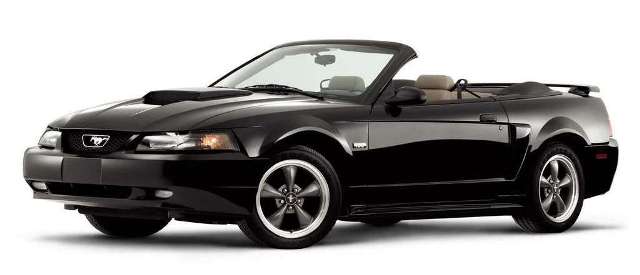
2003 Mustang Centennial Special Edition
2003 was Ford’s 100th anniversary and it kicked off a year long celebration to mark the occasion. In addition to all the festivities Ford decided to offer special Centennial Editions of some of its models, one of those was the Mustang.
The Centennial Package was only available on Mustang GT coupes or convertibles. These cars only came in black, paying homage to the original Ford Model T that Henry Ford had famously made available in “Any colour as long as it’s Black”. All centennial edition Mustangs came with the premium package that included premium 17-inch alloy wheels, anti-lock brakes and traction control, leather wrapped steering wheel and the awesome Mach 460 sound system with in dash 6-disc CD changer.
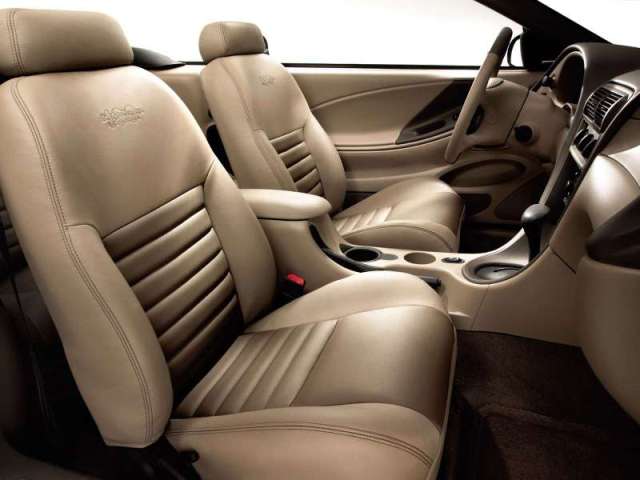
2003 Mustang GT Centennial Special Edition Interior
Inside, Centennial Edition Mustangs were outfitted with exclusive premium grade Verona-grain Imola leather seating surfaces finished in a two-tone parchment with 100th Anniversary logos embossed onto the seats. Changes to the exterior only consisted of “Ford Motor Company Centennial” badges that replaced the standard “GT” badges on the front fender and decklid. Total production was 2,040 vehicles that consisted of 717 coupes and 1,323 convertibles.
2004 Mustang 40th Anniversary Edition
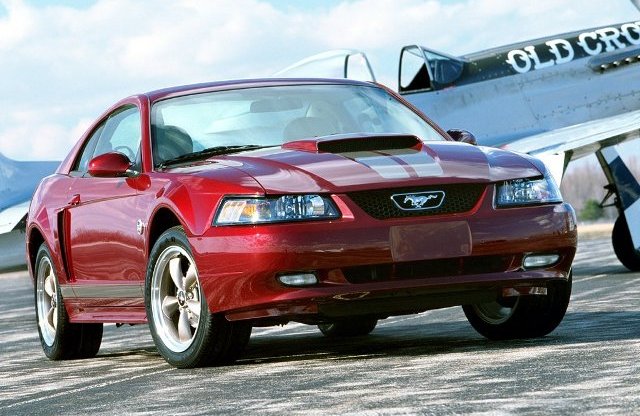
2004 Mustang 40th Anniversary Edition
Two thousand-four was yet another big year for the Mustang. Not only did this represent the final year of the long serving Fox based Mustang but it also marked the fortieth anniversary for the beloved pony car. To celebrate this milestone Ford decided to offer a special 40th Anniversary Edition package for Mustang buyers.
The 40th Anniversary option package was available in both V6 and GT models in both coupe and convertible body styles. These special Mustangs were available in Oxford white, Black or in a special Crimson Red that was exclusive to the anniversary package. To distinguish the 40th Anniversary Mustangs from either everyday cousins the anniversary cars deleted the rear spoiler and added the painted fold away mirrors from the Cobra and sharp Arizona Beige striping along the lower sides, hood and decklid. Wheels on V-6 models were highlighted with Arizona Beige accents while Bullitt style wheels with Arizona Beige painted centres were standard on the GT’s. Convertibles were equipped with an upgraded canvas top finished in beige that had only been previously available on the 2003-2004 Cobra. Inside, the anniversary Mustang was finished with Parchment cloth or leather interiors and special “40th Anniversary” floor mats.
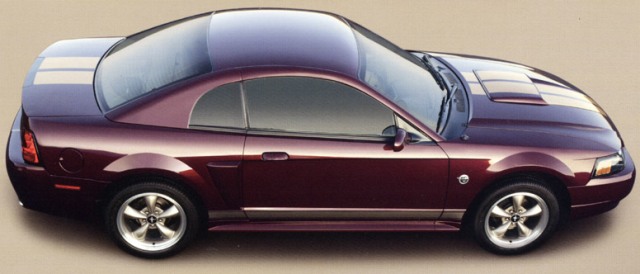
2004 Mustang 40th Anniversary Edition
Over the years there has been some confusion regarding the 2004 40th Anniversary Edition Mustang. This is because all 2004 Mustangs excluding the Cobra wore a “40th Anniversary” fender emblem. This has led many owners of everyday Mustangs to believe that they have a special edition package Mustang, when in fact they do not. So while just about all 2004 Mustangs wore a “40th Anniversary” fender emblem to mark 40 years of production only a very few vehicles were actually the limited production 40th Anniversary Edition package. Total production for the 40th Anniversary Edition was approximately 5,700 vehicles of which 4,529 were painted an exclusive Crimson Red..
2003-2004 Mustang Mach 1
With the success of the 2001 Mustang Bullitt, Ford once again wanted to cash in on the popularity of a retro inspired Mustang. Heritage was big back in 2003, especially at the Ford Motor Company who was celebrating a century of car building that year. This time however, instead of creating a new model with a retro feel the people at Ford decided to revive an old friend from the past. The Mustang name oozed heritage and Ford was more than willing to look into the past to bring some new sizzle to the Mustang line. With the introduction of the supercharged 390-horsepower Cobra for 2003 Ford had plenty of room in the line up to slot a new vehicle between the Cobra and the 260-horsepower GT. For this new model Ford decided to revive the Mach 1 nameplate; a car from the Mustangs golden-era of pavement punishing performance cars.
The Mach 1 from the late 60’s and early 70’s is a hallowed car among Mustang enthusiasts and Ford wanted to make a tribute car that had some substance to go along with the interior and exterior styling cues. They wanted to bring back the tire shredding performance that the Mach 1’s from the early days were known for, and Ford delivered the performance in a big way.
Under the hood Ford tossed out the 4.6-litre two-valve V-8 engine from the GT in favor of a 32-valve twin-cam. Now you can be forgiven if you think that the Mach 1’s 32-valve engine is simply the mill lifted out of the 2001 Cobra since these two engines share some similarities; however the 32-valver in the Mach 1 is a unique engine to the Mach 1. For starters the aluminum engine block used for the Mach 1 was sourced from the Windsor Aluminum Plant (WAP) rather than the Teksid aluminum blocks used in the 1996-1999 Cobras. The Windsor engine block only weighed 80-pounds, 5-pounds less than the Teksid block. For added rigidity the WAP block featured more external ribbing and revised main bearing webs internally. Engineers also reduced engine noise by employing a thicker pan rail.
Inside the engine, manually shifted Mach 1’s employed a forged steel crankshaft while slush-box equipped cars used a cast crankshaft. While both versions of the engine had the same horsepower ratings the automatic cars were limited to 5,800-rpm while the manual transmission Mach 1’s had a dizzying 6,800-rpm redline. These changes were deemed necessary in order to keep the automatic transmission from prematurely failing.
Bolted to the block were revised cylinder heads sourced from the 2003 Cobra. These new heads featured a high flow design and rerouted water passages. To get the most out of the new high flow heads engineers pilfered the camshafts from the 5.4-litre Lincoln InTech DOHC V-8. These cams provided the Mach 1 with more mid-range torque versus the 2001 engine in the Cobra. Along with the revised heads Ford also bumped up the compression ratio from 9.85:1 for the 2001 Cobra to 10.1:1 for the Mach 1. Bolted to the heads were reworked free-flow exhaust manifolds that were port-matched to the heads and a unique intake manifold with a cold air shaker scoop that poked up through the hood.
Horsepower for the 2003 and 2004 Mach 1 was rated at 305-horsepower and 320-pound-feet of torque. While horsepower was down slightly from the 2001 Cobra, torque on the other hand was up and the engine produced its peek power at lower engine speeds allowing the Mach 1 to be a better performing vehicle in most driving situations. It also allowed the driver to punish the pavement with some colossal smokey tire burnouts with relative ease, just like big block Mach 1’s did back in the late 60’s.
Because the chassis tuning that was used on the Bullitt was such a success, Ford pretty much equipped the Mach 1 with the same modifications. With the improved brakes, suspension and rigidity with the additional subframe connectors the Mach 1 could out perform the lesser GT not only on the drag strip but also through the corners. This was one area that the new generation Mach 1 thankfully differed from the past as the new car could both run circles around the old car and stop with complete confidence, abilities that were sorely lacking in the original car..
Inside, the Mach 1 was treated to the same interior treatment as the 2001 Bullitt. The retro themed gauges, machined aluminum shift ball, stainless steel pedals and sport seats were all carried over from the Bullitt, however the leather seats did have unique “Comfort Weave” textures that mimicked the 70’s style that were so popular in Mach 1’s from the past. And just like the Bullitt you could have any color interior you desired as long as it was dark grey!!
The exterior of the Mach 1 was treated to a host of clever and cool retro touches that brought muscle car memories flooding back, most obvious being the matt black shaker scoop protruding out of the power-dome hood. Start the car, prod the throttle and watch the shaker scoop come to life as it shakes and vibrates along with the engine. For added authenticity Ford even went to the trouble of dusting off the original tooling for the shaker scoop from 1970 so it could be used on the modern car!
Other highlights on the modern Mach 1 included matt black hood and lower side decals and rear spoiler. Up front a unique chin spoiler was added to the lower bumper and at the rear a stylized “Mach 1” badge using the same font used on the cars from the 60’s and 70’s was affixed to the trunk lid. Wheels on the 2003-2004 Mach 1 were a clever modern rendition of Magnum 500 wheels made of polished aluminum in an appropriate size of 17x8-inches. On 2003 cars the GT emblem was replaced with the red, white and blue tri-bar running horse emblem while 2004 editions had the confusing “40th anniversary” badging that adorned other Mustangs that year.
Color choices for the Mach 1 were especially vibrant recalling some of the bright Grabber colors from the 70’s. Initially, Mach 1’s were offered in Oxford White, Dark Shadow Grey, Black, Torch Red, Zinc Yellow and the exclusive to Mach 1 Azure Blue. For 2004 Zinc Yellow was replaced with the retina burning and appropriately named Screaming Yellow and Competition Orange was added to the color palette as well.
With a relatively light curb weight of 3,380-pounds, 305-horsepower 32-valve V-8 and suspension and brake improvements the 2003-2004 Mach 1 was not just a pretty car with retro cues but it also was a serious performer. In fact the modern Mach 1 could easily out perform its monster motored cousins from the past making this car one of the best performance Mustangs in history.
When tested the 2003 Mach1 with a manual transmission could hit 60-miles an hour in just 5.2 seconds and could dash through a 600-foot slalom at 63.5 miles-an-hour and produce .85 g’s of grip on a skid pad; very respectable for any vehicle at the time, especially one based on nearly quarter century old design. And with pricing pegged between the GT and Cobra the Mach 1 was an outstanding value!
Ford produced 9,652 Mach 1’s in 2003 and another 7,182 vehicles in 2004 making the Mach 1 on of the more popular special edition Mustangs produced. Not surprising since the 2003-2004 Mach 1 is a near perfect blend of performance, retro style and value.
While the Mach 1 was a powerful and popular rendition of a classic Mustang, the SVT Cobra still held on to top spot on the food chain and was evolving year after year into one of the most revered Mustangs of all time!
Click here to continue reading on the next page about the 1999-2001 Ford Mustang SVT Cobra...
Most Popular Articles

Japanese Nostalgic Vehicles: The next trend in classic cars
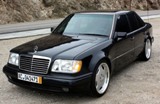
Five Sports Sedan's I'd Love to Own
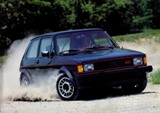
Hot Hatchbacks From the 1980's

Volvo 200 Series: An Unappriciated Classic
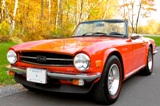
Triumph TR-6: Music to Anyone's Ears
Fifty Years of Mustang
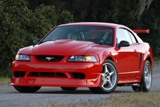
1999-2001 Ford Mustang SVT Cobra
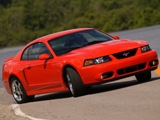
2003-2004 Ford Mustang SVT Cobra
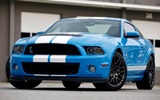
2010-2014 Ford Mustang Shelby GT500
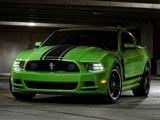
2012-2013 Ford Mustang Boss 302
Driven

Volvo 200 Series: An Unappriciated Classic

Triumph TR-6: Music to Anyone's Ears
1993 Nissan Skyline GT-s and GT-R Coupe

